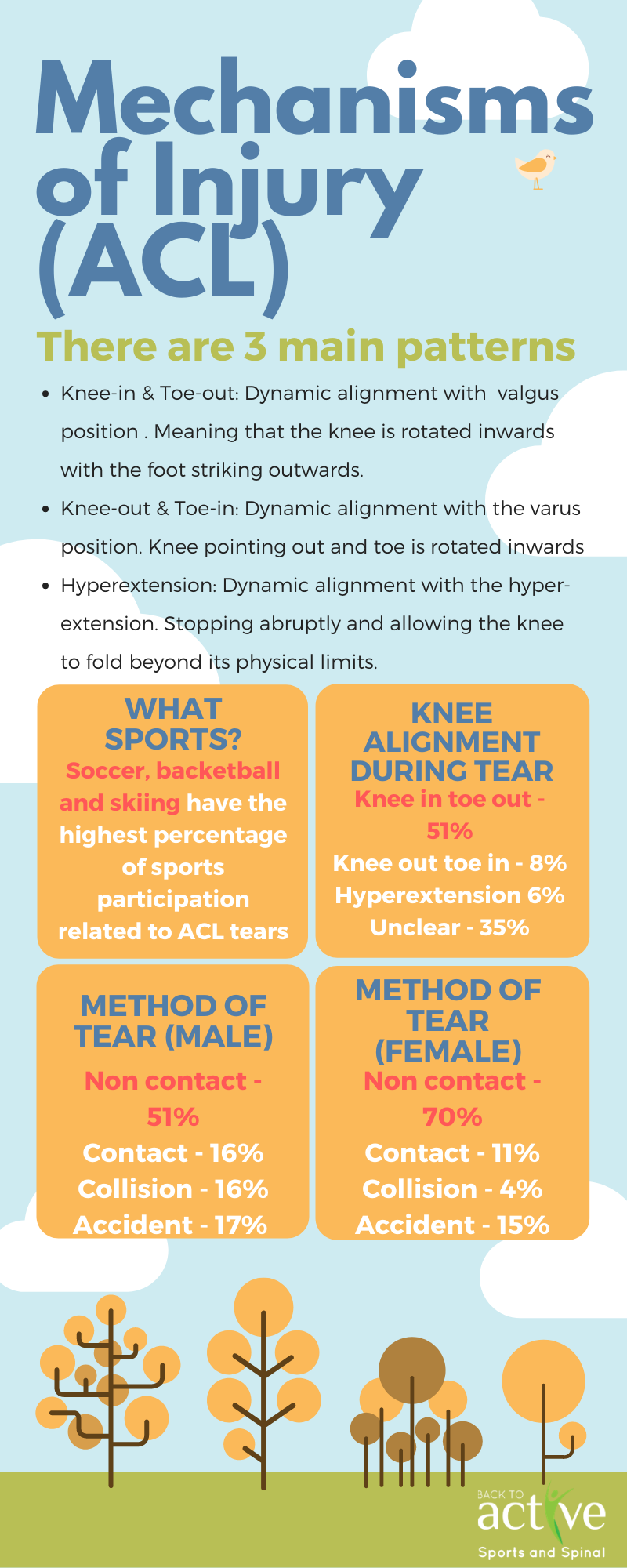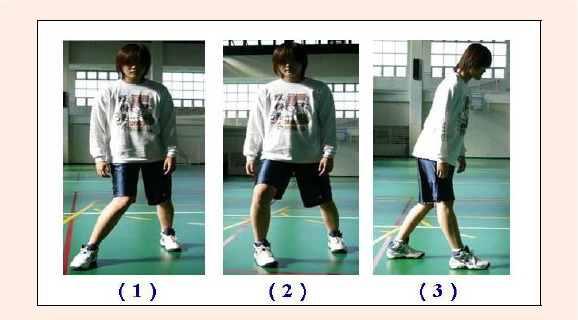
If you’re a visual learner, here are pictures of the 3 forms of dynamic stance:
-
(1) Knee-in & Toe-out: Knee valgus and foot abduction position
-
(2) Knee-out & Toe-in: Knee varus and foot adduction position
-
(3) Hyperextension: Hyper-extended knee position
 The mainstay formula to tearing an ACL is slight flexion up to 15 degrees with any of the aforementioned dynamic patterns. This is most common in basketball, skiing and soccer because there is a very high potential for ACL tear when the player or sportsman is changing directions. Immense torsional force is introduced into the knee and the knee is now susceptible to a non-contact ACL tear. More over when the player is practicing there is a high chance for ACL tear when learning new strategies and techniques. High stress, torsion and strain to the ACL is compiled when the player is involved in competitions. As the player is increasing in fatigue, mental then physical determination the risk of injury due to a lack of composure multiplies. Whilst evidence has agreed that females are more predisposed to ACL tears, it is still not concrete what risk factors increase susceptibility in females (postulated due to wider hip during child birth and a natural predisposition to “Knee-in & Toe-out” pattern).
The mainstay formula to tearing an ACL is slight flexion up to 15 degrees with any of the aforementioned dynamic patterns. This is most common in basketball, skiing and soccer because there is a very high potential for ACL tear when the player or sportsman is changing directions. Immense torsional force is introduced into the knee and the knee is now susceptible to a non-contact ACL tear. More over when the player is practicing there is a high chance for ACL tear when learning new strategies and techniques. High stress, torsion and strain to the ACL is compiled when the player is involved in competitions. As the player is increasing in fatigue, mental then physical determination the risk of injury due to a lack of composure multiplies. Whilst evidence has agreed that females are more predisposed to ACL tears, it is still not concrete what risk factors increase susceptibility in females (postulated due to wider hip during child birth and a natural predisposition to “Knee-in & Toe-out” pattern).
